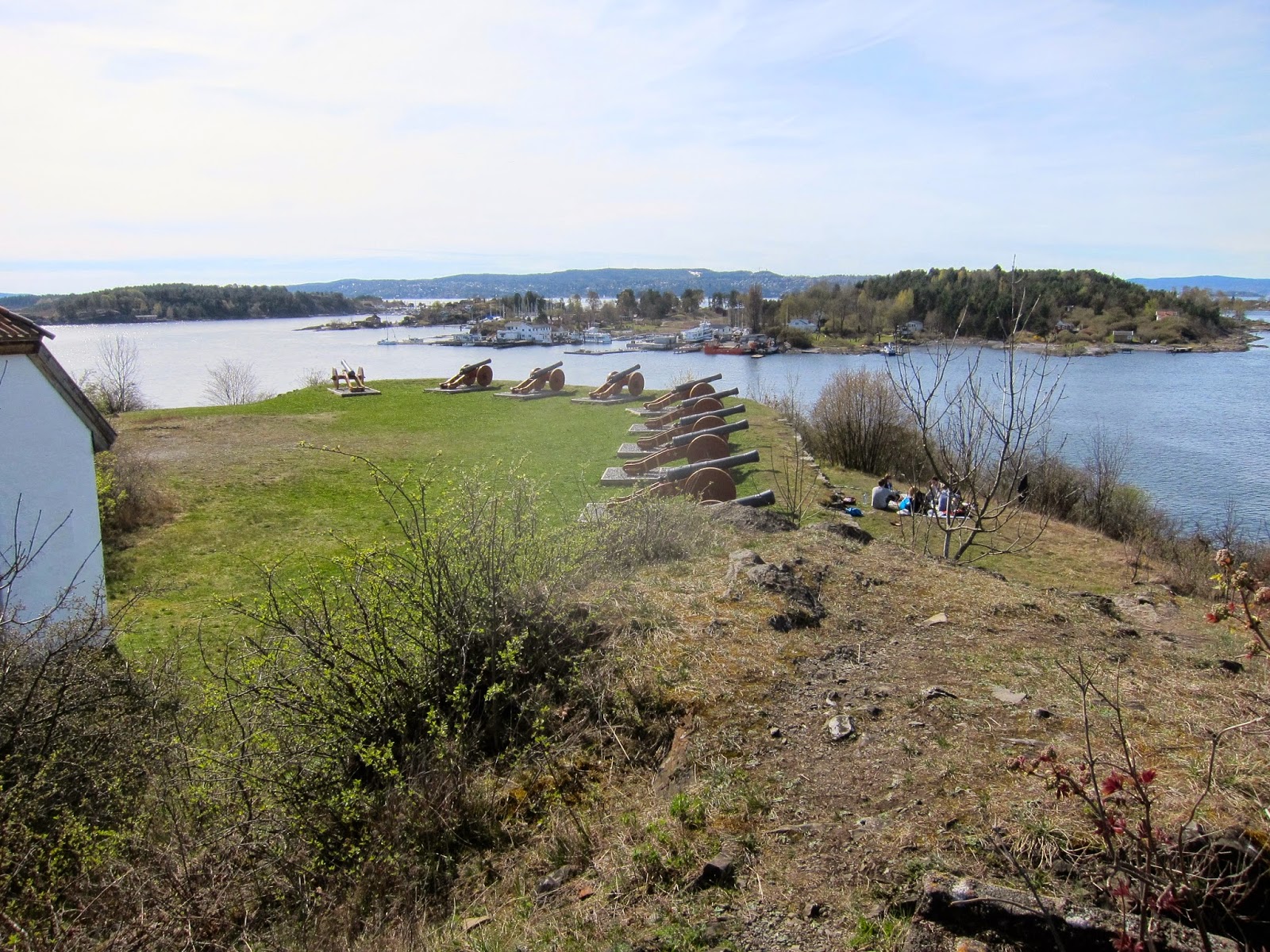Spring has come to Oslo, though it's not always very warm yet. The wildflowers in the woods are blooming, some of the plants in our own apartment's garden have opened up, and the trees have the feathery new leaves and blossoms of new life. I just love this time of year.
When the sun shines on the water, it sparkles in a different way than in the winter. I think it's the angle of the sun that makes the difference. People waiting for the bus when the sun is shining close their eyes and face the sun, soaking it in. There were a number of sunbathers and swimmers at one of the boardwalks downtown the other day too.
Sten is waiting for the King's cows to be put out to pasture where he walks to work every morning. The grass is getting long enough to give them some excellent grazing.
The 17th of May is Constitution Day in Norway -- a huge national day of parades, picnics, and parties. From locals I understand that many winter clean up projects and even building projects are planned to be finished for that day. Sten loves to go and check out the progress. This is right across the street from the Opera House. The buildings in the photo are called The Barcode. Can you see why?
The boats that bring people from in front of the City Hall (Rådhuset) to Bygdøy (where many museums are and where our apartment is) have started up again this month. We take the boat rather than the bus frequently.
Street musicians are more prevalent than during the colder months, though I have to say some have been around all winter. This group was worth stopping to listen to. They were great.
This one man band was amazing. He sang when he wasn't playing his horn.
One weekend the plaza in front of the City Hall was covered with large tents. Turban Day was happening, along with sales of Indian food and crafts. If you wanted to stand in the long lines, you could even get a free turban wound by a turban-wearing expert.
One recent Sunday we took a ferry ride to the island of Hovedøya in Oslofjord. We were delighted to learn that with our month bus passes the ride was free.
The island used to be home to a Cistercian monastery in the 12th century. though it was closed down before the Reformation. The remains can still be seen.
Two cannon batteries were built to defend Oslo during the Napoleonic war, and on the high points of the island gunpowder storehouses were located for defense in the mid 19th century.
Today, the island has no village and thus no car traffic -- just beaches, walking paths, a marina, and lots of private spots for people to sit, read, relax, and picnic.
Individuals, couples, and families set themselves down in spots they've discovered to enjoy the day in the sun.
Time to head home. Here's a view of the cannons from the ferry.
Oslo residents love a sunny day. Can you believe all the people out along the waterfront?

























































































